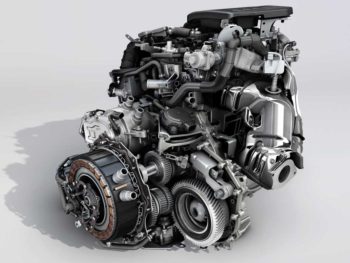Innovation: Renault e-Tech hybrid technology
Renault’s e-Tech hybrid technology debuts next year in the Clio. Alex Grant looks at how the technology is expected to command a diesel-like share of the market.
What is it?
Renault’s first full hybrid system, developed entirely in-house and debuting in the new Clio.
How does it work?
The core technology is a hybrid transmission, enabling two electric motor-generators to assist a 1.6-litre petrol engine. Renault’s aim was to offer a driving experience similar to an electric vehicle, while avoiding the unnatural, disconnected engine behaviour of a hybrid under heavy acceleration.
Off the mark, all of the pulling power comes from the larger of the two motor-generators, offering EV-like responsiveness while avoiding high loads on the petrol engine to get the car moving. Because the motor has two gears, for high or low-speed driving, it can augment the petrol engine all the way to the maximum speed of the car, improving performance and reducing fuel consumption
The petrol engine has its own set of four gears, so it can be run at the most efficient points in the rev range. This can directly drive the wheels, but there’s no need for first or second gear because low-speed driving is done on battery power. At high speeds the electric motor can also be decoupled to improve efficiency, if it’s not being used.
At the back of the car is a 1.2kWh lithium-ion battery, charged by regenerative braking and the second, much smaller, motor-generator which is permanently connected to the engine. Drivers won’t be able to select gears manually, but there will be a mode which increases regeneration, similar to engine braking when shifting down, and an EV mode is also under consideration.
Why is it important?
Diesel traditionally accounted for over half of European Clio sales, but that share halved during the outgoing car’s lifespan and Renault is expecting fiscal policy, shifting public opinion and rising compliance costs to continue that trend.
Launch versions of e-Tech feature a relatively powerful 132hp, which might limit demand, but performance can be scaled up or down by varying engine size or motor output. Renault says hybrids could account for a diesel-like share of Clio volumes in some markets within the lifespan of the new car – and e-Tech is earmarked for other Renault-Nissan-Mitsubishi Alliance vehicles too.
When does it launch?
The new Clio will get an e-Tech variant early next year, quickly followed by a plug-in hybrid versions of the drivetrain, featuring a larger-capacity 9.8kWh battery, which will be fitted to the next Captur and Mégane.


